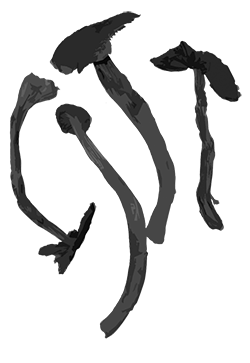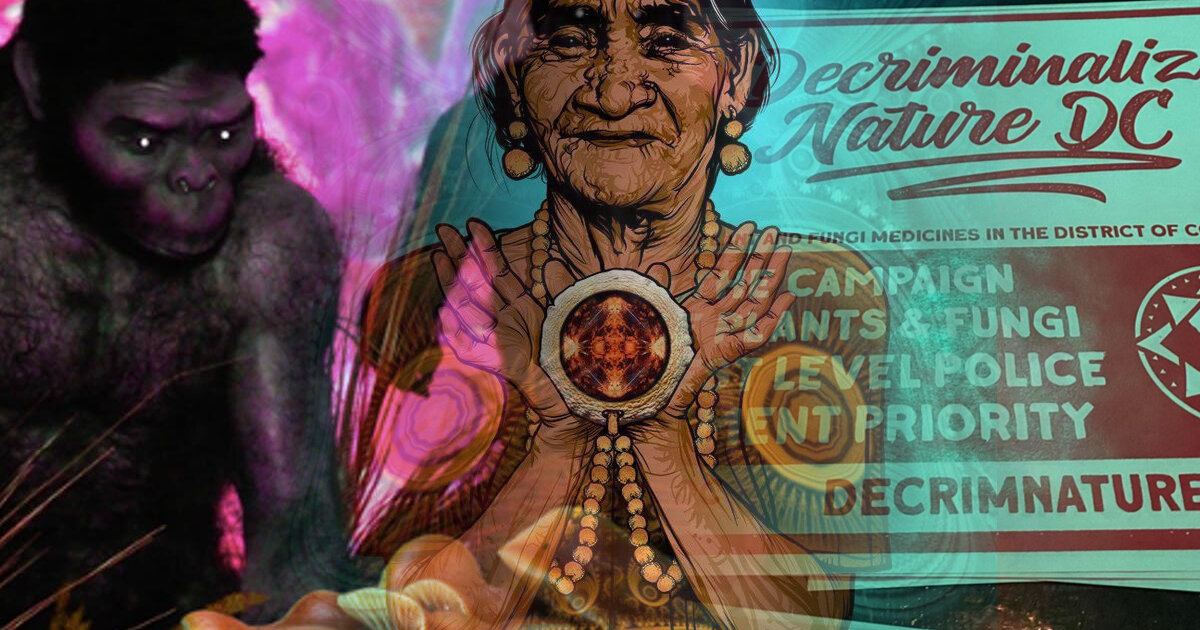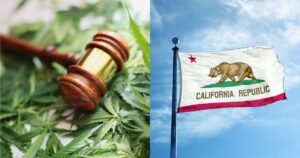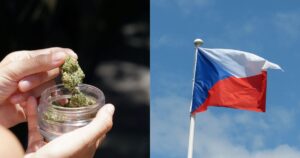
There are a lot of counterculture media outlets today, but we cannot think of another one that literally uses the founders’ faces as its logo the way we do here at Beard Bros. Pharms. As such, no matter where we go, we are instantly recognized in person as ‘those dudes that grow fire weed and deliver top-shelf cannabis news’.
This leads to daily conversations with our most engaged and informed peers about the topics currently shaping our culture and for many years, those conversations were centered on cannabis.
Lately, however, no matter where we go, the topic is turning more and more to a different plant medicine – psilocybin. The undeniable uptick in the public’s curiosity about this age-old, all-natural, ultimately safe & potentially healing mushroom-based therapy just so happens to coincide with a peaking of our own exploration into the subject and, so far, what we are learning is life-changing so we want to share it with you.
This is the first in what will be an ongoing series of articles covering the plant-based psychedelic experience like only we can. You cannot start a long, strange, trip without a proper set and setting, though, so this piece will provide a bit of the backstory of the human experience with psychedelic mushrooms and how it led to the reawakening that we are witnessing today.
DOWN TO EARTH
The awakening that we speak of is not just a grassroots or street-level phenomenon. Respected researchers are lining up behind theories that place these psychedelic mushrooms into the hands of indigenous humans in Australia and North Africa as far back as 10,000 BC based partly on crude depictions in rock paintings.
Similar cave paintings appear thousands of years later as well, turning up in Mayan and Aztec ruins around 1,500 BC in apparent homages to ceremonial usage of mushrooms, presumably for medicinal or spiritual purposes. The erosion of time and the lack of context surrounding the drawings leaves a lot of room for speculation, and speculators be speculatin’.
But to truly reach the beginning of the human experience with psychedelic mushrooms, we have to go way back… back, perhaps, even before humans.
There is a theory that was once laughed down by the intellectual elite for being too preposterous, but that has recently gained momentum in both the psychedelic and scientific communities, called the Stoned Ape Theory.
Championed by famed psychonaut Terence McKenna, the theory goes a little something like this.
Tens of thousands of years ago, predating Homo Sapiens as we know them today, our primate ancestors were forced down from the trees where they had evolved for thousands of years in relative safety and abundance, down to the plains and savannahs below where evolution truly became survival of the fittest.
As McKenna puts it in one of his famous speeches on the subject, our fruitatarian forefathers had a choice between “extinction or dietary expansion”. Fortunately for all of us, they chose the latter.
Observing baboons in Kenya in the late 1960s, McKenna watched them flipping over patties of cow shit in order to uncover sources of nutrition – mostly beetles n’ bugs but the occasional mushroom as well. This experience is what sparked his Stoned Ape Theory, as is has come to be known.
When our distant ancestors set foot in those African grasslands so many moons ago, they would undoubtedly have been greeted by a similar minefield of undulate excrement, or, the turds of hooved animals. McKenna argues that a lack of other food options in their newfound environment may very well have led the earliest version of mankind to an evolution-altering discovery.

McKenna posits that these primates found and reluctantly nibbled on these mushrooms while carefully seeking out new food sources, essentially microdosing on psilocybin. We’ll go much deeper into the benefits of microdosing in a future article, but one of those benefits is a heightened level of visual acuity – you can literally see more clearly. For a species so heavily reliant on hunting and avoiding being hunted, you can imagine the usefulness of temporarily boosting your eyesight.
But beyond whatever physical or emotional reaction our ancestors may have had from ingesting psilocybin, McKenna’s overarching hypothesis is that this dietary decision is the key that unlocked human consciousness.
Whether you buy that or not, McKenna’s theory curiously lines up nicely with the sudden evolution of the primate brain which saw it unexplainably grow 3x in size in a span of about 400,000 years leading to the emergence of the Homo Sapiens species.
IT WAS ALL GOOD, UNTIL IT WASN’T
As we mentioned, the medicinal and spiritual use of psychedelic mushrooms has been documented by indigenous peoples the world over for thousands of years of human history, but it wasn’t until well into the 20th century that civilized society was introduced to them.
In 1939, two ethnobiologists named Reko and Schultes published a paper in the Harvard University Botanical Museum Leaflets regarding the medicinal use of psychedelic mushrooms by healers down in Mexico. Their report inspired two other intrepid scientists, etnomycologists named Heim and Wasson who made their way to Central America to see what all the hype was about firsthand.
 They linked up with two local Mazatec shamans named Don Aurelio and Maria Sabina who dosed the Americans with a relatively humble amount of psilocybin, unknowingly altering the course of history when it comes to plant-based healing.
They linked up with two local Mazatec shamans named Don Aurelio and Maria Sabina who dosed the Americans with a relatively humble amount of psilocybin, unknowingly altering the course of history when it comes to plant-based healing.
The men returned stateside and published an article in TIME Magazine in 1957 headlined “Seeking the Magic Mushroom” and the term has stuck ever since. The funny thing is, the author never used the term at all, it was added by the editor. Crazy how culture develops, right?
If there is a theme to this chain of events, it would be ‘inspiration’ and the TIME article went viral, inspiring countless readers to start their own search for this naturally growing epiphany, including a man named Timothy Leary.
Leary, along with McKenna, is now regarded as perhaps the most prominent voice in advocating for psychedelic drugs in this era and his curiosity about psilocybin is credited with the major shift toward psychedelics by the Hippy Movement of the 1960s.
Also inspired were eager scientists logging new laboratory-grade research into “magic mushrooms” and the apparent benefits in treating ailments such as alcoholism, schizophrenia, autism spectrum disorders, obsessive-compulsive disorder, and depression, just to name a few.
The impact and inspiration that psychedelics like psilocybin had on the art of the era is undeniable as sight and sound took on a whole new meaning for those brave enough to take the trip.
This rise in popularity was not all positive, however, as the spotlight eventually drew the attention of the U.S. federal government which was in the planning stages of launching its doomed War on Drugs.
Mushrooms, much like cannabis, got caught in the crossfire and in 1970 both were added to Schedule I of the newly drafted Controlled Substances Act, deeming them federally illegal due to a high potential for abuse and no medicinal value. Damn, Uncle Sam, you sure fucked that one up.
The overnight criminalization of psilocybin ground nearly all laboratory research to a halt where it has virtually stood still for the past half a damn century. Until now.
PSILOCYBIN TODAY
Though there was some limited psilocybin research being conducted early in the 2000s, a real breakthrough was announced this past September when John Hopkins University unveiled plans for a new Center for Psychedelic and Consciousness Research which is now studying the compounds found in psilocybin with a goal of applying those ancient compounds to modern medicine.
The first of its kind here in the U.S., the venture was funded by over $17 million in private donations.
Inspired, activists and advocates across the country have mobilized to normalize responsible psilocybin use and, like with cannabis, educate the public and work to change the laws to end the negative stigma attached to it.
Denver, Colorado, and Oakland, California were the first two major U.S. cities to blaze that trail by successfully passing decriminalization laws for psilocybin possession, putting an end to the threat of jail time for those caught holding a personal amount of a mushroom that grows naturally.
Other cities have followed in their wake, with some like Santa Cruz going even further by decriminalizing ALL plant medicines like ayahuasca and ibogaine, not just psilocybin. The movement is inspired, and we are all in here at Beard Bros. Pharms.
Just as we have earned your trust as a beacon of truth in a sea of bullshit surrounding the cannabis plant and culture, we plan to provide the same dedicated, no-holds-barred coverage and culture preservation of the all-encompassing plant medicine movement.
Let’s take this trip together.

- Nebraska’s Governor Approves Emergency Medical Cannabis Regulations
- Poll Shows Americans Back States’ Right to Cannabis Reform
- Restaurant Spotlight: Pizzeria Due – Where Deep Dish Pizza Becomes a Chicago Rite of Passage
- Maryland Leads the Way in Cannabis Pardons, Setting an Example for Much-Needed Cannabis Reform
- Military Construction and Veterans Affairs Bill Amendments Could Change Medical Marijuana and MDMA-Assisted Therapy Options for Veterans
- Thailand’s U-Turn on Recreational Cannabis Use














